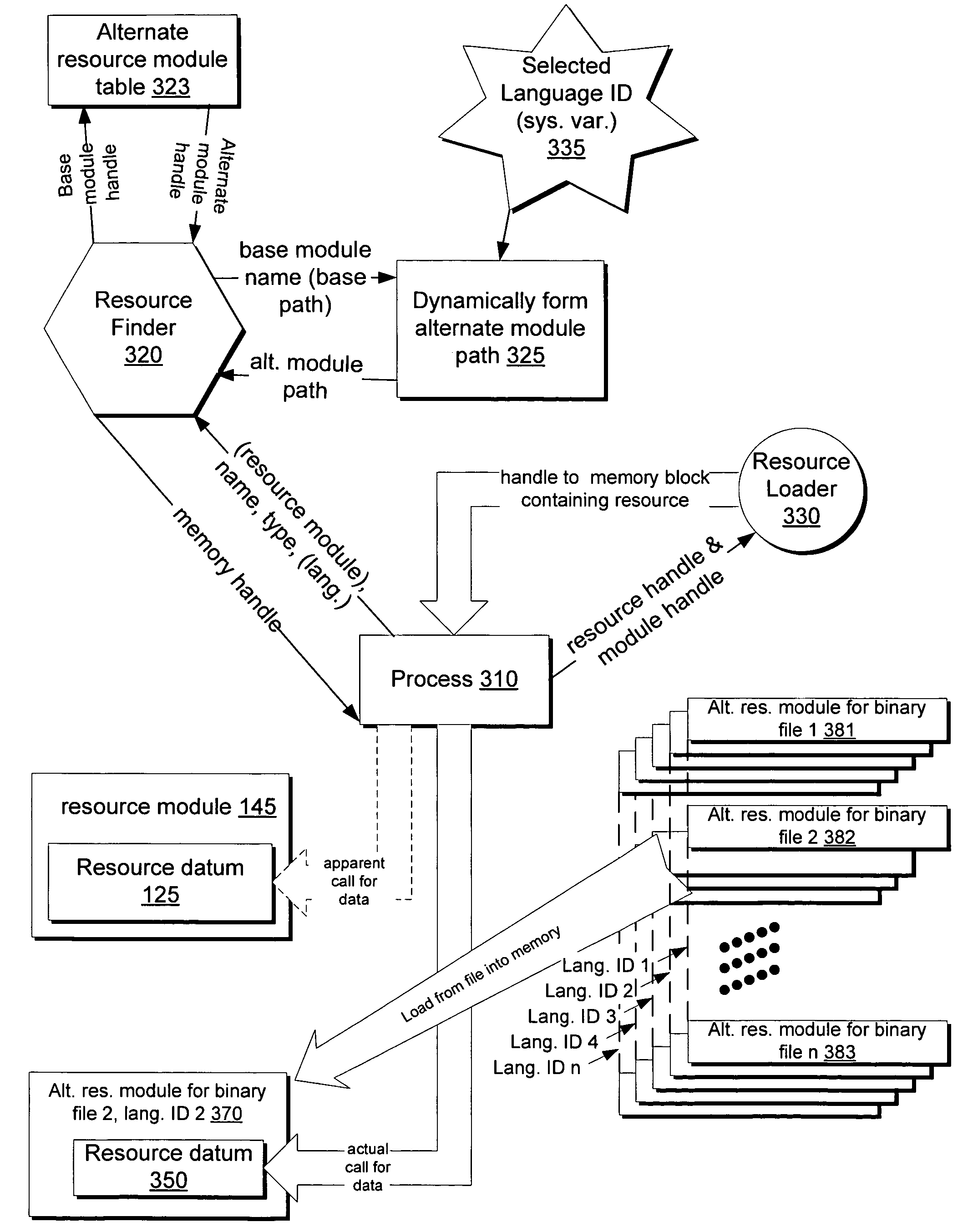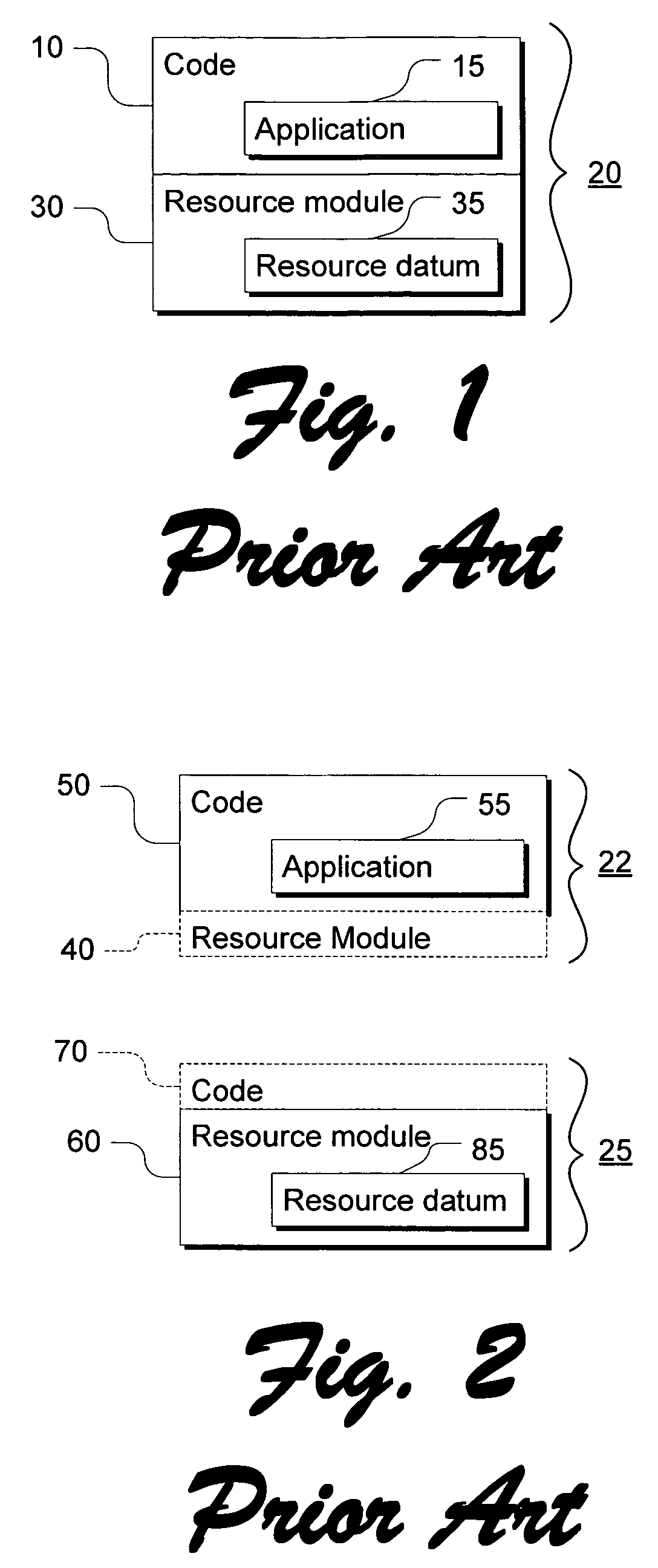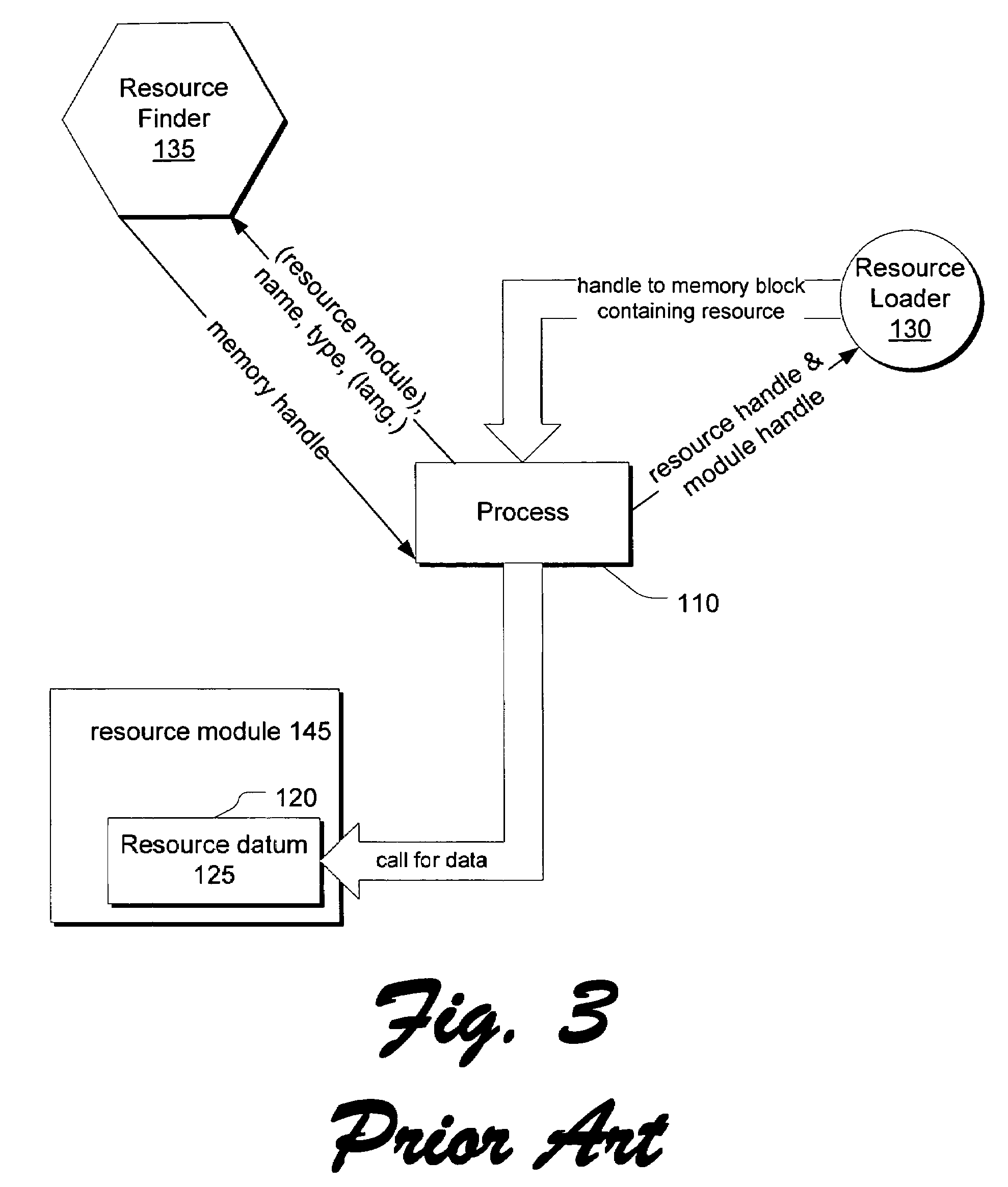Multilingual user interface for an operating system
a multilingual, operating system technology, applied in the direction of user interface execution, multiprogramming arrangement, instruments, etc., can solve the problems of excessive amount of memory, redundancy in the resulting mass of files, and the difficulty of selecting languages, so as to reduce the number of separate resource modules, reduce resource overhead, and load resources faster
- Summary
- Abstract
- Description
- Claims
- Application Information
AI Technical Summary
Benefits of technology
Problems solved by technology
Method used
Image
Examples
Embodiment Construction
[0045]Referring to FIG. 5, a process of calling for a resource datum through an operating system in a modification of the prior art process shown in FIG. 3, is shown. Processes within the resource loader 130 and resource finder 135, described with reference to FIG. 3, are modified to produce a process as illustrated in FIG. 5. In overarching terms, the process of FIG. 5 redirects a call by the process for a particular resource to an alternate-language resource so that the process receives a resource associated with a selected user-interface language instead of the default resource for the process. In an embodiment, loading of alternate resources only “kicks in” if the process did not specify the language it wants to load. In other words, a process tries to load resources and doesn't really care about which language. In the prior art system the resource loader would return the resources from either the resource section of the module itself, or from an external module, which the proce...
PUM
 Login to View More
Login to View More Abstract
Description
Claims
Application Information
 Login to View More
Login to View More - R&D
- Intellectual Property
- Life Sciences
- Materials
- Tech Scout
- Unparalleled Data Quality
- Higher Quality Content
- 60% Fewer Hallucinations
Browse by: Latest US Patents, China's latest patents, Technical Efficacy Thesaurus, Application Domain, Technology Topic, Popular Technical Reports.
© 2025 PatSnap. All rights reserved.Legal|Privacy policy|Modern Slavery Act Transparency Statement|Sitemap|About US| Contact US: help@patsnap.com



